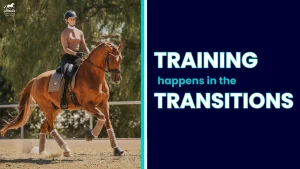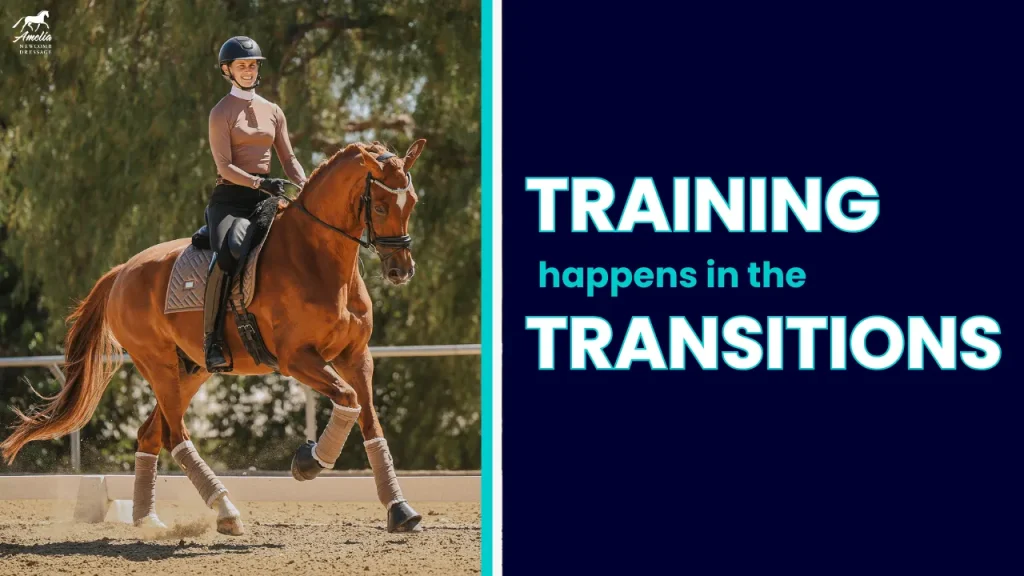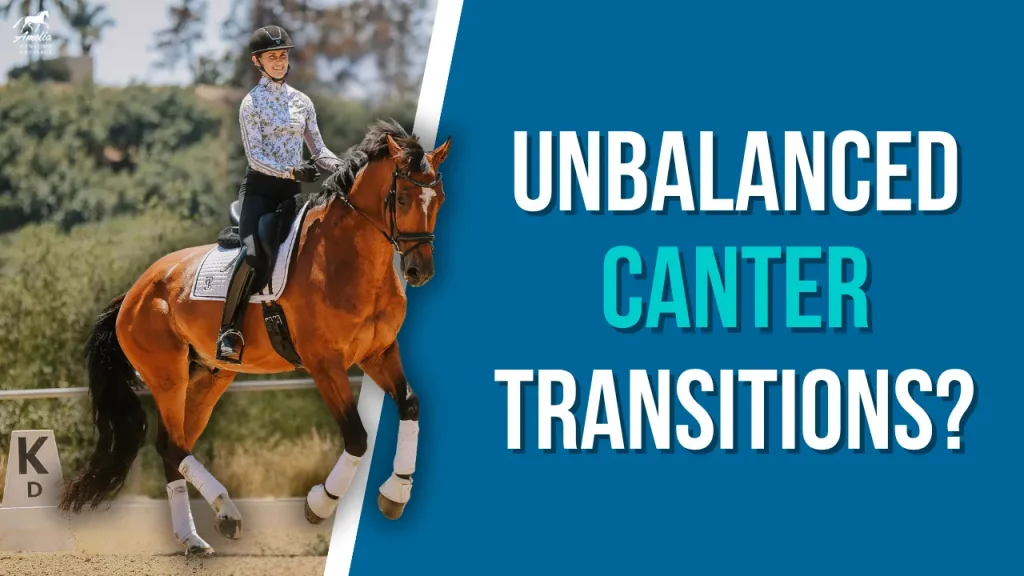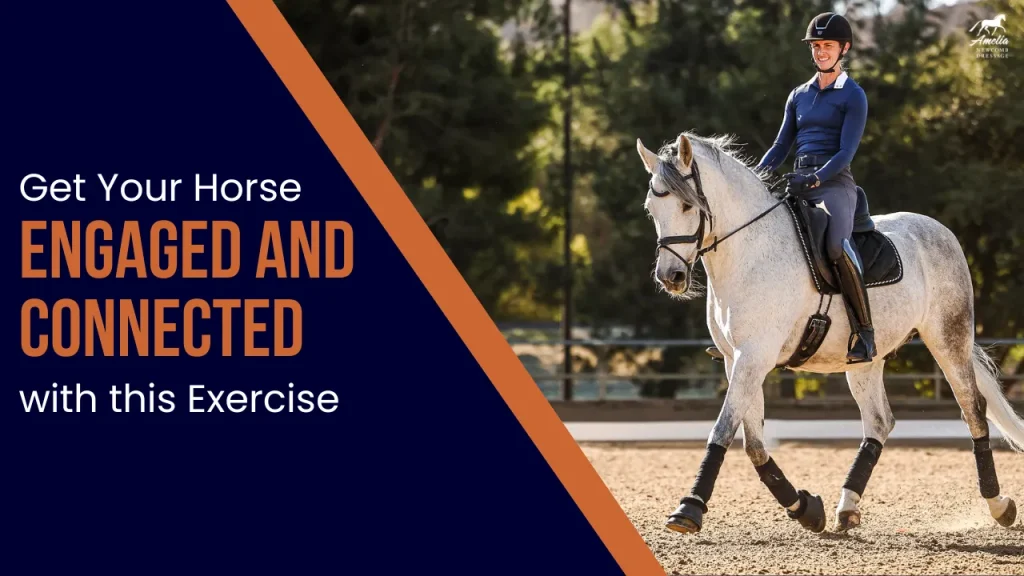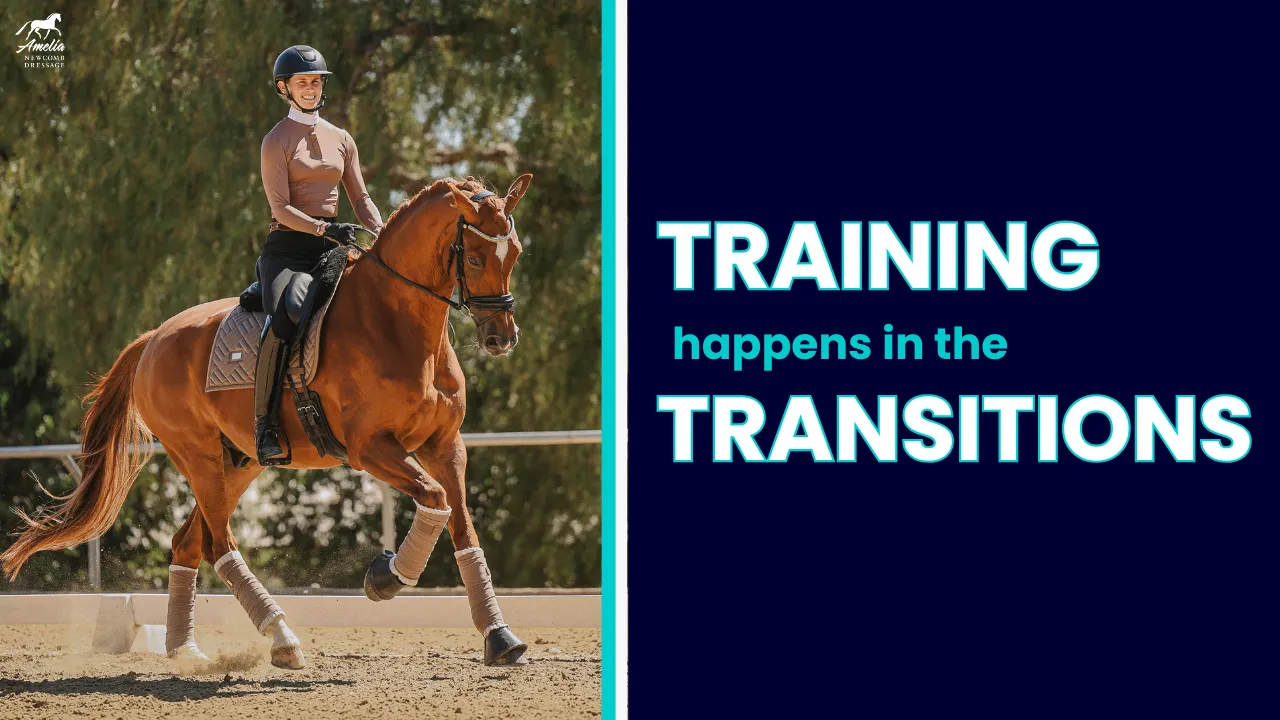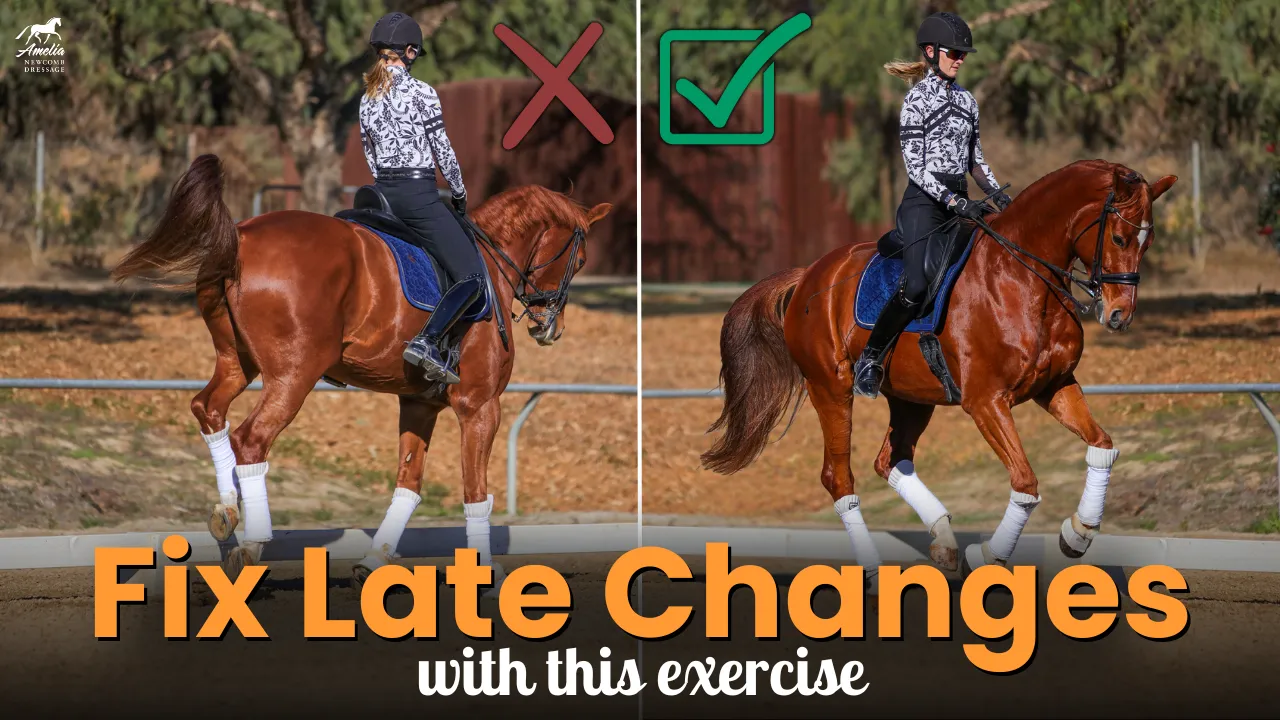My trainer, Joh Hinnemann, always has me work on my halts. Mr. Hinnemann says that a good halt is a sign of good training – and I would have to agree with him!
Executing a good halt is harder than it looks, and whether you’re riding Training Level or Grand Prix, you have to ride a halt! The tricky thing about working on your halts is that sometimes the more you work on them the worse they get! In this week’s video, I’m going to give you some tips and tricks to improve your halt!!
It is important to understand that while you have a halt at Training Level and at Grand Prix, the standard is much different. At Training Level is just really straightness, but at Grand Prix, there’s a whole other level of expectation – your horse needs to be engaged, connected and the transitions more prompt.
One of the best ways to start working towards a good halt is to practice your trot walk trot transitions. You want the horse to be nice and round and be able to maintain that roundness in the downward and upward transition to walk and trot. The more engaged and through your horse is in the general work the better your halt will be. The halt will magnify any resistance or inconsistencies that you have in the contact.
When trying the halt initially, do so along the rail to help keep your horse straight. Walk along the rail, and then very slowly draw yourself up, pull your tummy in and maintain a steady contact to ask for the halt. At this point. it doesn’t have to be square. What you want to be concerned about is threefold.
- They stay straight
- They stay round
- They don’t lean and resist the contact.
When your horse does all these things, they will be much more likely to stand square. Squareness is VERY hard to detect without looking, so if you concentrate on the above three elements being present, they are MUCH more likely to halt square.
If you can’t achieve the halt well as described above. Go back to the trot-walk-trot transition and work through that. If you persist with the halt when they’re resisting, they’ll get fidgety and upset and you won’t make progress. Always try to fix the halt somewhere else.
Have a look at this video where I practice this with Kensington and let me know if you find it helpful!
Thanks for watching and happy riding.
